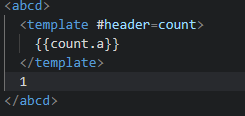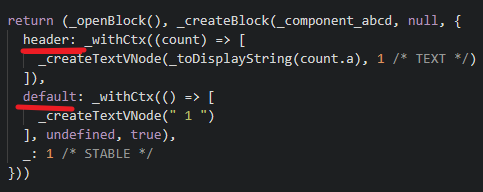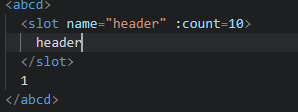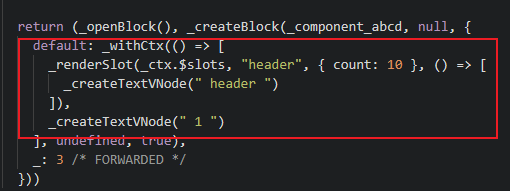插槽
只有在组件内才算插槽,传入 createVnode 的第三个参数
js
const MyComponent = {
setup() {
useLifycycle()
return {
title:"asdfasd"
}
},
render(proxy) {
return h(Fragment, [
h('div', proxy.$slots.header('header')),
h('div', proxy.$slots.default()),
h('div', proxy.$slots.footer())
])
}
}
render(h(MyComponent, {}, {
default: () => h('div', 'default'),
header: (title) => h('h1', title),
footer: () => h('footer', 'footer')
}), app)createVNode 如果传入了一个对象,就是插槽
js
function createVNode(type, props, children = null){
if (children) {
let type = 0;
if (Array.isArray(children)) {
type = ShapeFlags.ARRAY_CHILDREN;
} else if (isObject(children)){
type = ShapeFlags.SLOTS_CHILDREN; // $slots 可以获取到属性
} else {
type = ShapeFlags.TEXT_CHILDREN;
}
vnode.shapeFlag |= type;
}
}同时,在 🔗setupComponent 函数中,把 slot 挂载到 instance.slots 上
js
function initSlots(instance, children) {
instance.slots = children
}
function setupComponent(instance){
const publicProperties = {
//...
$slots: (instance) => instance.slots
};
const setup = type.setup;
const setupResult = setup(instance.props, {
// ...
slots: instance.slots,
});
initSlots(instance,children)
}在 render 中传递了instance.proxy
js
const subTree = instance.render.call(instance.proxy, instance.proxy);
patch(instance.subTree, subTree, container);所以在下面的 render 函数中的 $slots 就是 instance.slots,也即传入的 对象函数
js
对于作用域插槽,其实本质是一个回调函数的调用render(proxy) {
return h(Fragment, [
h('div', proxy.$slots.header('header')),
h('div', proxy.$slots.default()),
h('div', proxy.$slots.footer())
])
}编译代码
父元素使用,接收了一个形参叫count,一般情况下会使用解构
html
<template #header={count}>
</template>

子元素创建,传入了一个对象作为参数,现在只有一个count 属性
